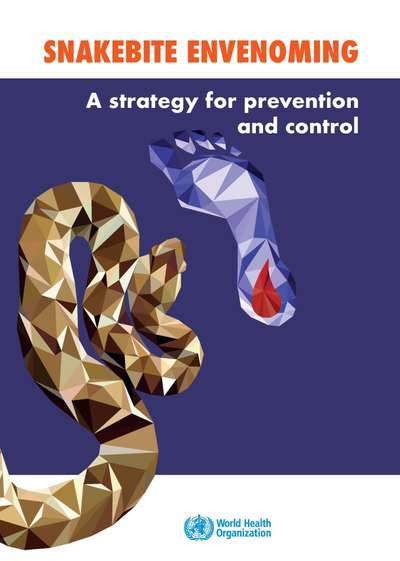Snakebite Envenoming: A Strategy for Prevention and Control
Control of Neglected Tropical Diseases

A disease whose time has come -- Snakebite envenoming is a neglected tropical disease (NTD) that is responsible for enormous suffering, disability and premature death on every continent. As over 5.8 billion people are at risk of encountering a venomous snake, it is not surprising but no less tragic that almost 7400 people every day are bitten by snakes, and 220–380 men, women and children die as a result i, adding up to about 2.7 million cases of envenoming and 81 000–138 000 deaths a year. The economic cost of snakebite envenoming is unmanageable in most countries, as it affects not only the victims but often their entire families, particularly in poor communities in low- and middle-income countries that do not have social security.
As work towards achieving the objectives of UHC2030 (https://www.uhc2030.org/) accelerates, immediate action is needed to reduce the burden of suffering of some of the world’s most disadvantaged communities, and countries around the globe have appealed for a coordinated response. Following a recommendation by WHO’s Strategic and Technical Advisory Group for Neglected Tropical Diseases and a resolution on snakebite envenoming adopted by the Seventy-first World Health Assembly in 2018, WHO has added this disease to its list of category A NTDs. It has now developed a strategy to reduce mortality and disability from snakebite envenoming by 50% before 2030. This document describes the strategy for action in countries, supported by regional collaboration, that will save lives and prevent needless suffering.
https://apps.who.int/iris/handle/10665/324838
Publication Details
- Published: 2019
- Publisher: World Health Organization
- ISBN-13: 978-92-4-151564-1
- Dewey Decimal: 615.942